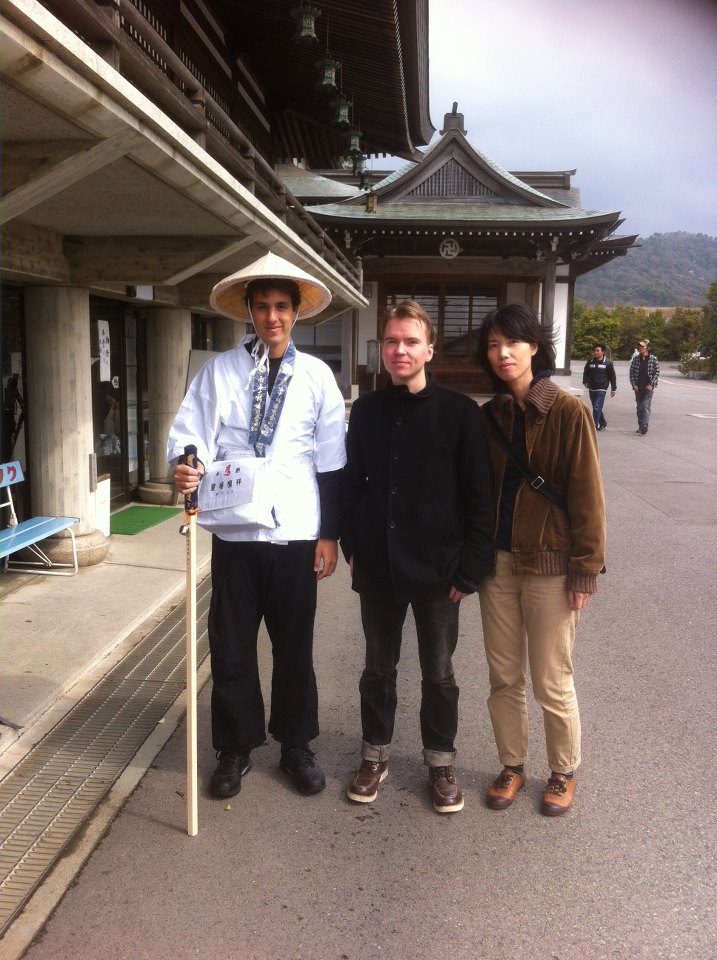Shikoku island 88 temple pilgrimage
Would you take 2 months off from your work or school for the purpose of walking 1200km / 750 miles in a varyingly mountainous and oceanside area in the middle of countryside Japan? It's the 88 temple pilgrimage here in Shikoku island, Japan. The pilgrimage starts from Tokushima, goes around the whole Shikoku island along the coast and then eventually returns back to the starting place. Along the way you go from temple to temple, getting a stamp from each for your travel book which will serve as your memento. If you choose to accept this challenge, you will become "ohenro", the Japanese term or a pilgrim.
For many it acts as a kind of meditative purification of the mind. All day from morning to evening you are just walking, walking, walking. Hoping to stay on the path. Occasionally accepting gifts of food from kind folk you encounter, or perhaps share your walk with another pilgrim for a while. But most of the time you are just in your own thoughts, or emptying your mind.
We used to host visitors who need a place to stay for a night or two through a site called CouchSurfing. When we listed our home as an available place for fellow travellers, we had no idea what kind of people would apply. Turns out most people who come here plan to do all or at least a part of the pilgrimage. Helping them start their journey, we have taken them to the first temple. From there they go in numerical order from the first all the way to the last 88th temple. At each they collect a stamp to fill their stamp book. At some temples they may sleep the night. Other times they sleep in a tent, or find others willing to let them stay at their homes. During the journey, as a sign of your goal of purification you are expected to wear all white, topped with a funky hat and a staff.
Here's us with a pilgrim at the first temple.

Ways to complete the Shikoku pilgrimage
The most traditional way is to walk from temple to temple. However there are also bus tours for those who want the pilgrimage, but don't feel that the fashion in which you complete it isn't as important. The most extreme way I've heard is running . In the book Running the Shikoku Pilgrimage: 900 Miles to Enlightenment Amy Chavez runs the whole pilgrimage, equivalent of almost a marathon every day.
Another way to complete is a taxi tour, which is perfect if you don't want to walk, but a bus doesn't sound appealing and you are with a small group of friends. Yet another way is to do the pilgrimage by bicycle.
Cost
"I spent about $6,300 for my walk in 1999, but that included airfare, books, everything. When i did it more recently, i usually spent about ¥7,800/day." -shikokuhenrotrail.com
We haven't actually done the pilgrimage, but we do live in Tokushima, Japan (see our cost of living Japan) and that does sound about right. The author's cautions about handling money don't seem warranted to me. The article is a bit dated in terms of recommending traveler's cheques. Nowadays you can withdraw money from ATMs in post offices and convenience stores using your credit- or debit card. If your card doesn't work, try another place. I've found post offices to be the most reliable. The author also seems a bit over-cautious about handling money, personally I wouldn't think much about carrying around amounts of ~$500 in Japan. The risk you'll drop or forget your wallet is higher than it getting stolen. If you put an address and phone number inside, even if it gets lost it is very likely to get returned with all cash still inside.
Pilgrimage documentary
There exists a huuuge free Shikoku pilgrimage documentary by Ingmar Beldman, embedded below.
Map
In the first temple you will get all your gear such as the pilgrimage outfit and there are also trail maps. If you would like to browse a bit before your trip, there are many good maps online. This site has an embedded Google Maps widget with the route through all of the 88 pilgrimage temples marked.
Hiring a guide
This isn't something you generally do. Due to the long length of the walk, for most people it wouldn't be a very good use of money to hire a guide. Instead you can pair up with a fellow traveler during your journey. With maps, the GPS in your phone, guideposts and help from fellow travelers a guide is not necessary. Shikoku island is also perfectly safe. In fact I can't immediately think of a safer place in the world for a traveler!
Bus tours
The key word for searching for bus tours in Japanese is "遍路バスツアー" (henro bus tour).
Need more help?
Since we live in the area and speak Japanese, it's pretty easy for us to research more if necessary. Drop a line at me@bemmu.com. Nowadays we have a baby in the house, so we probably can't host any pilgrims any longer, but feel free to ask anything else.